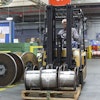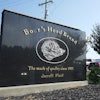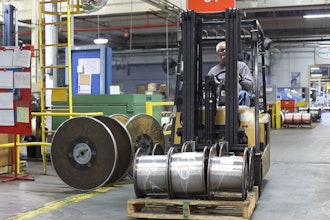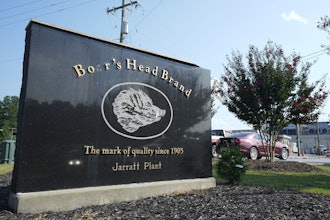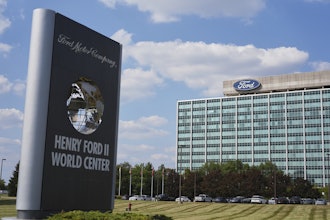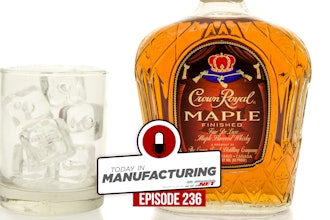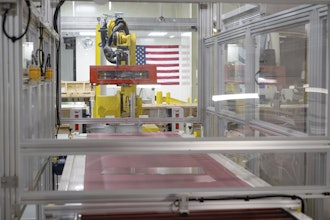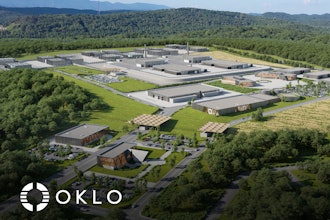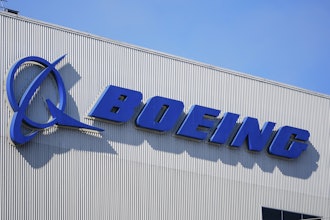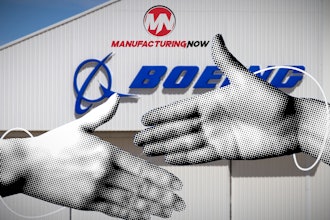Refusing to be edged out by offshore competition, Morey Corp. invests in a new facility and sophisticated automation technology.
|
A value-added approach has triggered an expanded view for Morey, taking its operations from manufacturing into overall project management. |
When it comes to the concept of value, the folks at The Morey Corporation have a lot more to talk about than just price. In fact, words like “quality,” “choice,” and “customer” come up most when speaking with management of this electronic component solutions provider in Woodridge, IL. And it’s no accident that Morey is growing in a down market—the company integrates forward-thinking into every element of its philosophy, and the results have paid off.
The Morey Corporation has a legacy in northern IL, beginning in 1934 as Monarch Manufacturing, when company founder William Morey began building radio test sets for Montgomery Ward. Over the years, responding to market and political conditions (Morey manufactured radio equipment for World War II, then moved into other critical applications like medical, aviation, and electrical switchboards), the company grew into what is now a turnkey solution in ruggedized electronics, with DFM (design for manufacturability) as one of the cornerstones. This, coupled with an aggressive investment in technology, has taken Morey’s customer focus to the next level.
Rolling With The Punches
|
The Morey Corporation's commitment to technology investments means a lot of automation. |
But this was not always the strategy for The Morey Corporation—as company history shows, they’ve become skillful at adapting in response to market conditions. “Build to print organizations in the United States at this time are moving offshore,” says Jim Kondziolka, director of quality assurance. “To be a better value-added organization, we’ve incorporated our expertise in design and our skills in project management, lean manufacturing, and supply chain, to give our customers more of a choice than they had before.”
This value-added approach has triggered an expanded view for Morey, taking its operations from manufacturing and into overall project management for its customers. This means Morey's customers need not allocate their own engineering and management resources to oversee the project, even at the design stage. “We’re trying to be competitive with the offshore facilities using value-added, not just price,” adds Kondziolka. “Because if you want a million a day of something, that’s just not us. But if you want a customized, ruggedized product that gives you long-term quality and reliability, then this is the place to come.”
Morey also offers its customers the PT (project tracker) tool, managed by a team of company project managers in order to keep a centralized database of relevant information. This repository of information is live and accessible to the team, and contains project goals, meeting notes, and timelines, in order to keep the design, development, and production on track.
Putting Your Money Where Your Mouth Is
|
Chris Murphy, director of process engineering, shows off one of the sophisticated PCBs the company produces. |
Investment in this new approach has come through several avenues. One is The Morey Corporation’s state-of-the-art facility in Woodridge, which the company opened last September. In an effort to enhance competitive advantage, the company designed the new campus to include the 27,500 square foot Richard and Gene Morey Innovation Center. The new facility is dedicated to the implementation of technology for displays, controllers and telematics, and the development of ruggedized enabling hardware.
Another element Morey took into account when expanding had to do with one of the company's biggest assets—the employees. When prospecting for a new location for this facility (the previous location was about eight miles away), employees home addresses were mapped out on a grid. “They tried to put a facility at the mid-point of this big circle of where people lived,” says Kondziolka. The Morey Corporation has only a four percent turnover rate, with many long-term employees of over 20 years with the company. “If you make it easy to come to work, that’s half the battle. The facility looks like a campus environment, and they’re very big on cleanliness. If you keep a place clean, people have higher expectations.”
Technology First
|
To maintain a competitive edge against offshore companies, The Morey Corp. offers design, project management, and manufacturing capabilities for a full turn-key approach. |
Still, one of the biggest investments, and a driver for consistent success for The Morey Corporation, is keeping the facility stocked with the latest technology in state-of-the-art automation equipment. “Over the last 15 years especially, we’ve added a lot of automation, from an assembly standpoint, but also from an error-proofing, quality assurance standpoint,” says Bill Prasch, director of manufacturing.
Adds Chris Murphy, director of process engineering, “We have come to the conclusion that staying at the latest technology allows you to be competitive, allows you the best opportunity for quality, and gives you the best advantages in doing things that are on the cutting edge. Our company’s philosophy is based on constantly getting new equipment.”
Morey’s approach entails utilizing leasing programs, something the company sees as critical in its ability to constantly improve technologically. Instead of keeping an in-house maintenance team busy trying to attain a long-term ROI on an equipment purchase, the leasing allows for the equipment to be cycled out more quickly. “We realize that is an operating cost,” says Murphy. “Outside of one, our oldest piece of equipment in the building is less than five years old.”? The company also negotiates training programs in with the equipment contracts, to ensure the employees are being consistently kept up to speed on any new operational knowledge.
|
The company has also been proactive in set-up reduction, or “creating a set-up that allows us to do more quick changeovers,” explains Prasch. |
Flexible Focus
From a practical standpoint, there is an inherent challenge when taking a turnkey approach with a commitment to on-time delivery, while still trying to remain operationally flexible. Prasch owes this flexibility to a meticulous balance of resources between steady state production and new product introductions. “It helps to recognize that the steady state, firefighting approach always tends to win if you don’t dedicate a certain amount of resources to the new opportunities as well.
“The other way we stay flexible is in the way that we manage inventory coming to the floor, and the level of finished goods that we hold,” adds Prasch. “We don’t sit on a lot of stock that will age, but we replenish stock based on the ordering trends of our customers. We’ve designed a demand-flow planning system that regulates how much we bring to the floor of any particular product, when we bring it to the floor, and how much inventory we hold in finished goods for our customers. It’s all based upon looking forwards and backwards.”
The company has also been proactive in set-up reduction, or “creating a set-up that allows us to do more quick changeovers,” explains Prasch. “A lot of our products run through the same general process, so we can remain pretty flexible and keep our lot sizes large enough to gain efficiency, but small enough to remain flexible. And we have metrics for process cycle times.”
Keeping Up With The Customer
|
The way to best provide these solutions, according to the Morey approach to business, is having the long-term knowledge of where the company is headed. |
This knowledge of customer needs is a deliberate way for Morey to become more of a partner than a supplier. “We want to be a strategic partner to our customer,” says Murphy. “We do as much investigation into our customers as they do to us, because we want it to be win-win.”
“It comes back to really understanding their needs, and making a real effort not just to provide a product, but provide a solution,” adds Prasch. “It forces us to go in there and really get to know their strengths and weaknesses. They might come to us thinking they’re looking for a product, but they walk away realizing that they really need a solution.”
And the way to best provide these solutions, according to the Morey approach to business, is having the long-term knowledge of where the company is headed, and the confidence to achieve those objectives. Prasch describes a relic he holds onto to this day—a document that company ownership had constructed ten years ago, detailing the vision of The Morey Corporation, and its business goals. “You can go back and read it and recognize this facility, and a lot of the core values that we hold and the competencies that we have now that we didn’t have then,” he says. “You can see it was a direct result of them having that unwavering vision. It’s very forward-looking, and it was realized.”
